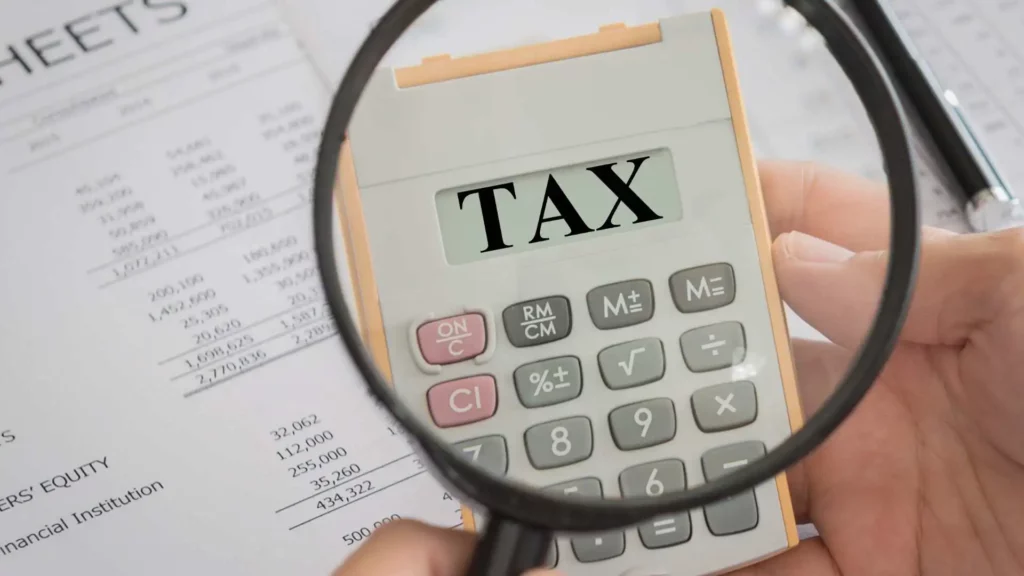With the gig economy flourishing, more and more people are making the most of self-employment opportunities to earn extra money. There are many people who are making a leap into full-time self-employment. However, when you start working by yourself, you might have to pay self-employment tax that is different from other taxes.
When you are employed by a company or an individual, be it a full-time or part-time job, your employer withholds taxes from your paycheck. As your employer, they are responsible for withholding taxes and then paying them to the government.
On the contrary, if you are working as a self-employed individual, your clients will not be responsible for withholding taxes on your behalf. It becomes solely your responsibility to withhold and pay taxes on the income you earned from self-employment.
Does Ohio Have Self-Employment Tax?
If you’re self-employed in Ohio, you’ll need to pay self-employment tax. This tax covers your contributions to Social Security and Medicare, which are normally split between an employer and employee.
As a self-employed individual, you’re responsible for the full 15.3% tax rate (12.4% for Social Security and 2.9% for Medicare).
Thankfully, Ohio does offer a business income deduction to help ease the tax burden. It’s essential to calculate your self-employment tax, make estimated payments if necessary, and file the appropriate forms with your federal tax return.
What is Self-Employment Tax in Ohio?
Self-employed workers in Ohio are required to file an annual tax return. As a self-employed individual, you must pay taxes on your net profit from your business. It also consists of Social Security and Medicare taxes.
While the Social Security tax is a flat rate on net self-employment income up to an annual income ceiling, the Medicare tax is a flat rate with no income ceiling. It includes an additional tax for those earning over a certain threshold.
What Does Self-Employment Tax in Ohio Consist of?
As a self-employed individual living in Ohio, you must pay taxes on the income you generate from your business in the state. Ohio only collects taxes in the form of Social Security and Medicare from self-employed individuals.
Who is Considered Liable to Pay Self-Employed Tax in Ohio?
There may be some confusion in the minds of many self-employed individuals or independent contractors if they are liable to pay self-employment taxes in Ohio. The IRS considers you to be self-employed if you:
- Carry on a trade or business as a sole proprietor or an independent contractor.
- Are a member of a partnership that carries on a trade or business.
- Are otherwise in business for yourself (including a part-time business or a gig worker).
For instance, if you are working as a freelance or independent interior designer, you fall under the category of self-employed for taxation purposes. Note that the same rules apply to skilled professionals such as lawyers, doctors and tutors who are running a business for themselves and not working for a designated organization.
How Much is the Self-Employment Tax Rate in Ohio?
The self employment tax rate for 2022-2023 in Ohio is 15.3%. This rate is the sum of a 12.4% Social Security tax and a 2.9% Medicare tax on your net earnings from self employment. Taxpayers who work for themselves must cover the entire 15.3% of these taxes in addition to paying the normal income tax rates.
What is the Minimum Income to File Self-Employment Tax in Ohio?
You have to pay self-employment tax in Ohio if you fall in either of the categories during the financial year:
- You had $400 or more in net earnings from self-employment.
- You are self-employed in the eyes of the IRS if you received a 1099 Form from an entity you worked for during the period.
- You had $108.28 or more in income from church employment.
If your income falls in any of the above-mentioned categories, you must pay a fixed Ohio self-employment tax rate. If your net earning from self-employment is less than $400, you will still need to file an income tax return as per the filing requirement listed in Form 1040 and 1040-SR.
How to Calculate my Self-Employment Tax in Ohio?
There’s a simple formula that can help you easily calculate the self-employment tax you owe to the state of Ohio. Follow these steps:
- Calculate and confirm your net earnings from self-employment by deducting your business expenses from your gross income.
- Then multiply the number of net earnings by 92.35%. This is the amount of your income that will go as self-employment tax.
- A third step will require you to multiply this number by the 15.3% tax rate to get the exact amount of taxes that you owe to the state of Ohio.
Here’s an example to demonstrate how you can calculate the self-employment tax:
For instance, you worked as a freelance developer and earned a net income of $40,000 last year. When you multiply it by 92.35%, you get $36,940 as your taxable income in terms of self-employment taxes. Now, when you multiply this taxable income by the 15.3% tax rate, you get $5,652. This is the amount you need to pay in self-employment tax to Ohio state.
What are the Tax Deductions for Self-Employed in Ohio?
As a self-employed individual, you must take maximum advantage of certain deductions to lower your tax bill and maximize your return this tax season.
A majority of self-employed individuals and independent contractors take deductions in form of home office expenses, travel costs and health insurance premiums among others.
Here are some common tax deductions freelancers, contractors and other self-employed people can avail while working in Ohio:
- If you work from your home or use part of it in your business, you can avail home office deductions.
- If you bought medical insurance policies for yourself, you might qualify for a deduction on the premiums.
- You can make deductions for “qualifying work-related education” such as tuition, books and related expenses.
- Contributions made to a solo or one-participant 401(k) plan of up to $61,000 in 2022 are tax-deductible.
- Interest accrued on purchases that were business expenses are potential self-employment tax deductions.
- Self-employed individuals could deduct part or all of their annual cell phone or internet bill.
- If you are traveling by car, flight or other ways for business, expenses for travel and food can be considered tax deductions.
When to Pay Self-Employment Taxes in Ohio?
No matter how busy you are while working as a self-employed individual, you must comply with the following schedule to make quarterly tax payments on your income. It applies to both the IRS and the Franchise Tax Board of Ohio.
- 1st quarter (January 1 – Mar 31, 2023) payment is due on April 18, 2023.
- 2nd quarter (April 1 – May 31) payment is due on June 15, 2023.
- 3rd quarter (June 1 – August 31) payment is due on September 15, 2023.
- 4th quarter (September 1 – December 31) payment is due on January 17, 2024.
How to File Self-Employment Tax in Ohio?
While filing your self-employment taxes, you can use Schedule SE or Form 1040 to determine the tax due on net earnings from your business. The Social Security Administration also uses the information from Schedule SE to determine the benefits under the social security program.
To determine the net taxable income while filing the return, you’ll need to provide your Social Security Number or Individual Taxpayer Identification Number (ITIN).
If you never had an SSN, you can apply for one using Form SS-5, Application for a Social Security Card. You can download the form from the Social Security Number and Card website or your nearest Social Security office. To apply for an ITIN, file Form W-7.
What Forms do I Need to File Ohio State Self-Employed Income Tax?
The IRS Form 1040 Schedule C is required for reporting net earnings from your business. In addition, you will have to fill out the IRS Form 1040 Schedule SE to calculate your self-employment taxes. Self-employed people can prepay their estimated taxes quarterly, using Form 1040-ES vouchers.
What Happens if I Don’t Pay Ohio Self-Employment Taxes on Time?
If you don’t make your tax payments on time, you might be charged a penalty, including both state and federal fines. At the same time, interest can be levied on every missed or late payment.
What is the Penalty Charged?
If you don’t pay Ohio self-employment tax on time, a penalty will be issued on the basis of the percentage owed.
- Penalty for failure to file: The tax penalty is typically 5% of the unpaid tax for every month or part of a month when your return is late. The IRS has capped the penalty at 25% (5 months) of your balance. A minimum penalty applies if your return is over 60 days late. Remember that this year, the tax returns are due on April 18, 2023. If you need more time to file your taxes, you can request an extension until October 15. If you fail to request an extension or miss your extended due date, the IRS can charge a failure to file a penalty.
- Penalty for failure to pay: If you fail to pay the taxes by the deadline, the IRS charges a failure to pay penalty. This tax penalty is 0.5% of the tax you owe every month. The IRS has also limited the same to 25% of the tax due. To avoid any penalties, pay your tax by the deadline.
Conclusion
With April quickly approaching, start the process of filing your self-employment tax. Review your information with accuracy and ensure you file your taxes on time. One of the most important things you should know about self-employed tax basics is organizing your business and understanding the different tax implications it has. We can’t stress enough the importance of knowing what deductions can be made while filing self-employment taxes in Ohio. The more deductions you itemize, the lower your taxable income will be and the lesser you will be required to pay.
File your federal and state taxes online with Beem. You can claim all the tax credits and deductions you are eligible for and file all forms, combinations, and filing statuses, including multi-state filing. You can also try Beem’s free Tax Calculator for an accurate federal and state tax estimate.






























